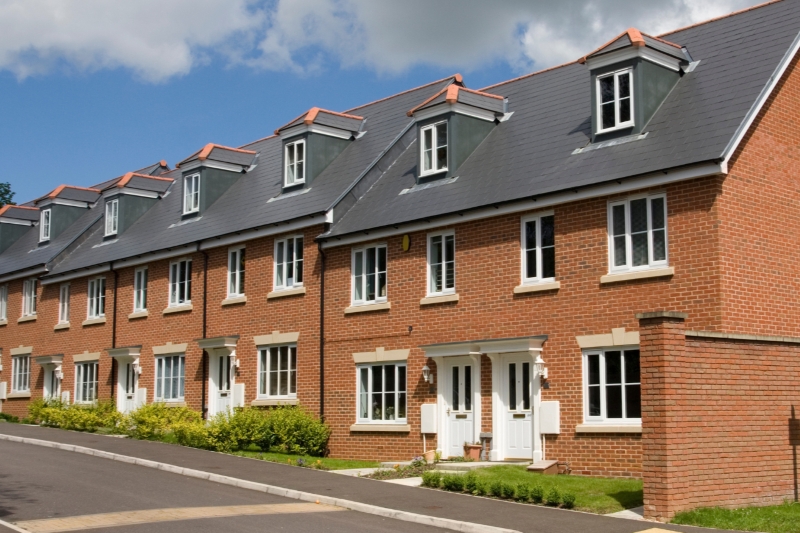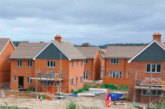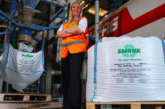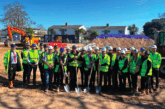
In response to the UK housing crisis, many new builds are being developed, even in rural areas, raising concerns about their impact on wildlife and the environment.
In one Sussex village, plans for 190 new homes have prompted over 1,700 objection letters and the formation of a campaign group to contest the project.
While these concerns are valid, well-planned developments can support ecosystems by creating ecological value on-site. This approach, known as Biodiversity Net Gain (BNG), is mandatory in England and requires new developments to leave habitats at least 10% more ecologically valuable than before construction.
For house builders working towards creating a biodiverse development, Thomson Environmental Consultants shares six actions that can be taken to mitigate wildlife and environmental loss.
1. Get a preliminary ecological assessment (PEA)
Firstly, it’s important to understand a site’s baseline biodiversity. Developers should carry out a preliminary ecological assessment (PEA) that includes a habitat condition assessment. This allows the site’s baseline biodiversity value to be calculated, and they’re usually required as part of planning applications in the first place.
2. Early engagement with an ecologist
Working closely with an ecologist to optioneer the scheme will provide house builders with guidance on the potential impacts of different site layouts, enabling them to identify those that have the least ecological impact, and therefore lower associated costs and /or those that yield the best level of biodiversity gain post-development.
Early engagement with an ecologist is crucial in housing projects to avoid significant delays, comply with mandatory legislation, such as the BNG, and ensure ecological surveys can be undertaken within key seasons whilst aligning to overall project timelines. Partnering with an ecologist can also reduce costs for developers in the long run.
3. Plant native plants and trees
Native plants and trees that are consistent with species in the wider environment will offer greater biodiversity value than species that are out of context with the wider environment or non-native.
In terms of which native plants and trees to choose, it depends on the habitats that already exist on the site and in close proximity to it. Enhancing existing habitats to achieve better conditions or avoiding the removal of habitats in good condition is generally preferable to their removal and subsequent recreation.
4. Test the on-site soil
Ground investigation and testing soil can be integral for housing developments, helping to assess site stability and structural integrity as well as identifying risks like contamination. However, such testing can also be important for site biodiversity, allowing a consultant to make informed decisions and recommendations about ecological enhancement that are in keeping with surrounding ecological conditions, and that will be compatible with ground conditions on site.
Testing the soils on site is important to ensure that the soil structure and chemistry are compatible with the native plants and trees proposed. For example, sites with high nutrient loads would be incompatible with some types of meadow planting, which generally require nutrient-poor conditions to establish.
5. Flood resilience from green and blue infrastructure
Blue and green infrastructure enhances flood resilience by replicating natural water processes to manage rainwater, alleviate pressure on traditional drainage systems, and retain water where it falls. Blue infrastructure encompasses water bodies, including ponds and wetlands, while green infrastructure comprises features such as rain gardens, green roofs, riparian planting and street trees. Working together, they slowly absorb and delay the discharge of rainfall, reducing flood depth and duration and help to protect urban areas from overwhelming weather events.
6. Urban cooling
Urban cooling in housing developments is beneficial because it reduces the Urban Heat Island (UHI) effect, resulting in more comfortable living environments. This can be achieved through green infrastructure, such as green roofs, green walls, and trees, which provide shade and cooling through the process of evapotranspiration. Benefits include lower energy consumption for air conditioning, improved air quality, enhanced public health, and can support increased property values.
Working with an ecologist early helps developers avoid common mistakes with ecological assessments, including those for Biodiversity Net Gain (BNG). Mistakes can include missing or late baseline assessments, missing key survey windows, not engaging with or neglecting long-term management requirements, or making biodiversity as an afterthought within wider site plans. Not only do early site assessments give greater opportunity to plan and deal with ecological constraints and opportunities, it can also help identify locations with lower existing biodiversity, making gains easier and more cost-effective to achieve.
To learn more about creating ecological value in housing developments, please visit: https://www.thomsonec.com/news/biodiversity-housebuilders-ecological-value/








